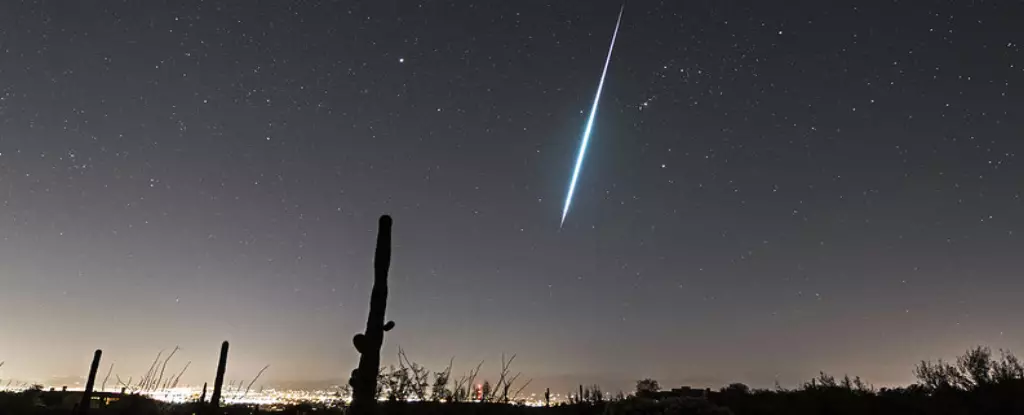As we approach the conclusion of 2024, the night sky promises an awe-inspiring display in the form of the Geminid meteor shower. Scheduled to peak from the night of December 13th to 14th, this celestial spectacle stands out as one of the premier astronomical events of the year. However, meteor enthusiasts must prepare for certain challenges, such as chillier weather and a nearly full Moon that could hamper visibility.
The pinnacle of the Geminid meteor shower will occur at 3:00 Universal Time (UT) on December 14th, corresponding to 10:00 PM EST on December 13th. This timing is crucial as it marks the moment when the shower’s activity will be at its highest, showcasing an impressive Zenithal Hourly Rate (ZHR) of around 120 meteors per hour. The optimal viewing conditions will favor regions in Western Europe and North America, making it accessible for millions of sky-watchers.
While the winter weather will be a deterrent, the radiant point of the meteors, positioned in the constellation Gemini near the bright star Castor, means that enthusiasts can begin their observations late in the evening, before the clock strikes midnight. Those looking to maximize their viewing experience should seek out dark areas where artificial light is minimal and ensure a clear horizon for an uninterrupted line of sight.
The Geminids are unique among meteor showers, as their parent body is not a traditional comet, but rather 3200 Phaethon, a body classified as a “rock-comet.” This celestial object orbits the Sun every 1.4 years and blurs the lines between asteroids and comets, sparking intrigue among astronomers. Plans for a closer inspection of 3200 Phaethon are in motion as Japan proposes to send its DESTINY+ mission in 2028 to gather more insights about this enigmatic object.
Since their first recorded observation in 1862, the Geminids have progressively become one of the most spectacular meteor showers, even surpassing the famed Perseids in popularity and visibility. This shift is likely due to an increase in traveler comfort during colder months and a rise in public interest in celestial events.
To fully enjoy the Geminid meteor shower, it is essential to scout your viewing location beforehand. The December Moon will be just a constellation away during the peak, so consider positioning yourself in a way that physical obstructions—such as hills or trees—can shield you from its brightness. Early morning beyond the predawn hours may provide a better chance to view the meteors as the Moon will be lower in the sky, offering a more profound dark-sky backdrop.
Moreover, don’t limit your observations to just December 14th. The shower remains active in the nights leading up and following the peak, providing additional opportunities for enthusiastic observers. Consider planning your outings accordingly; the ideal meteor watching strategy combines patience and preparation.
For those interested in contributing to the scientific community, participation in the International Meteor Organization (IMO) is just an observation away. By recording the number and direction of meteors you witness, you can assist in expanding our understanding of these fascinating celestial events.
Though the Geminid shower will be the star of the show, enthusiasts should keep an eye out for other meteor showers that will coincide during mid-December, including the tail end of the Taurids and the Ursids that peak on December 22nd.
As 2024 draws to a close, the Geminid meteor shower presents a splendid opportunity for stargazers and aspiring astronomers to witness the beauty of our universe. Despite some challenges such as inclement weather and lunar brightness, the rewards of watching these celestial messengers streak across the night sky are well worth the effort. Prepare your blankets, gather your friends and family, and make plans to observe this mesmerizing display—it’s a spectacular way to close out the year and embrace the wonders of the cosmos!


Leave a Reply